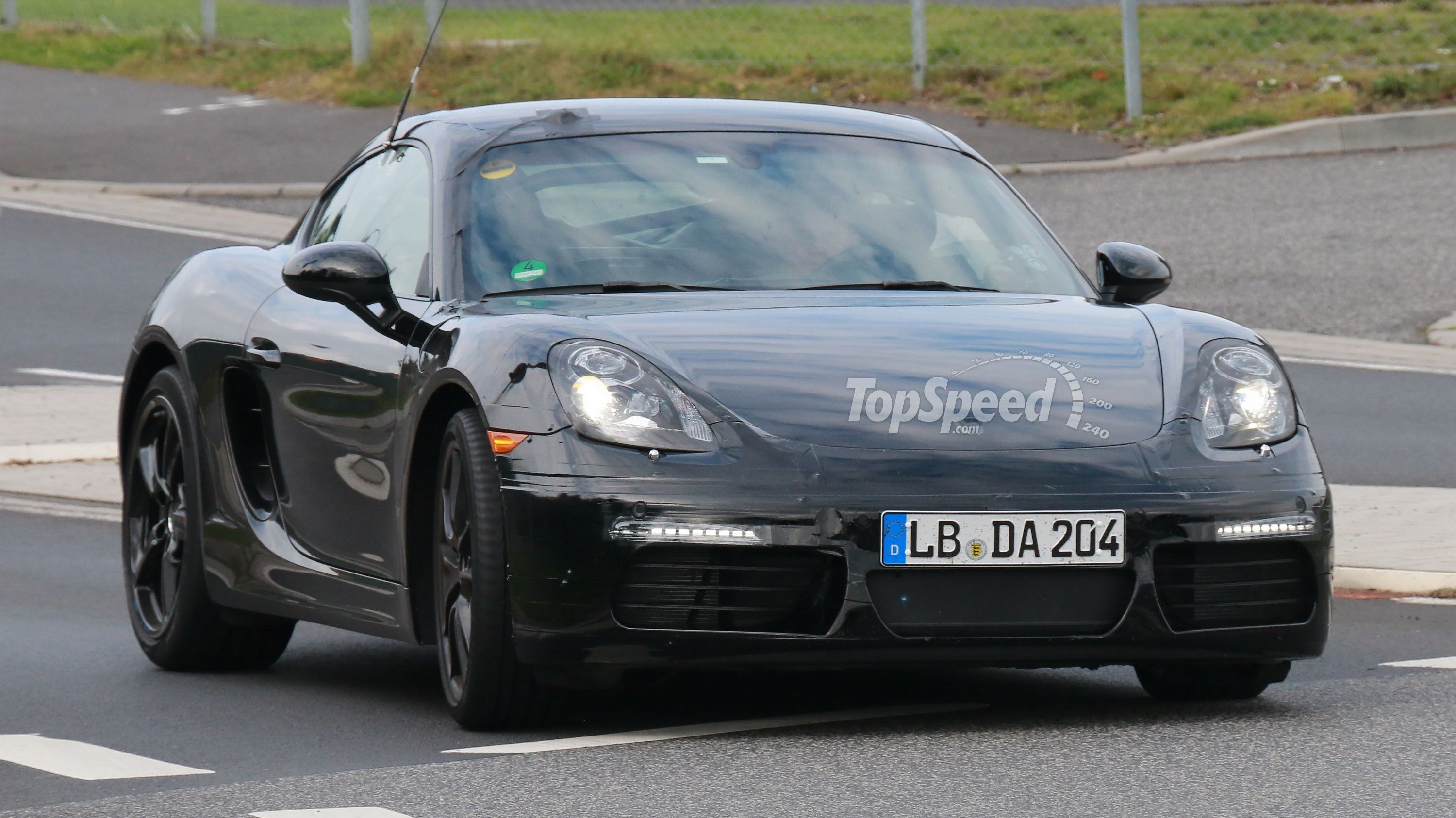By mid-2016, Porsche->ke1 will begin outfitting the Boxster->ke570 and Cayman->ke5 with four-cylinder engines, replacing the six-cylinder mills. The confirmation comes after years of rumors and speculation as to what Stuttgart has in store for the two iconic sports cars,->ke506 with the upcoming refresh for the 2017 model year.
The news comes courtesy of Porsche CEO Matthias Mueller, who spoke with Automotive News recently about the German automaker’s plans for the new engine, saying, “First of all, we will have it in the Boxster and Cayman successor. And then we will see how it works and how successful it is and how the customers will react on that, and then we will take the next decisions.” That leaves the door open for other models in the Porsche lineup to receive the new four-cylinder.
While official details are currently hazy, we do know the pistons will be arranged in a horizontally opposed layout and will probably be boosted by a turbocharger. Expect 2.0-liter and 2.5-liter engines. Output could be as high as 395 horsepower.
That would trump the Boxster Spyder’s 375 horsepower and the Cayman GT4’s 385 horsepower, both of which come from detuned versions of the naturally aspirated 3.8-liter flat-sixes plucked from the 911 Carrera S.
The last four-cylinder Porsche sold in the U.S. was two decades in the past with the 968 in 1995. The German marque currently sells four-banger versions of the Macan->ke2674 in British and Chinese->ke2090 markets.
Continue reading for the full story.
Why it matters
This news probably comes as a relief for Porsche-philes, at least in terms of quieting the rumor mill a bit. Now that Mueller has finally confirmed the manufacturer’s intentions to imbue the new Boxster and Cayman with four-cylinder engines, the debate can resume around a few facts rather than mere speculation. Now, the questions are in the details – to boost or not to boost? How much displacement? And most importantly, how much power?
A downsized engine for the Cayman and Boxster has been on the table for quite some time now, so Mueller’s validation of the upcoming four-powered models shouldn’t be altogether surprising. After all, both vehicles can trace their lineage to the 968, which sold between 1992 and 1995 and came with two different 3.0-liter inline-fours, one of which produced 240 horsepower in twin-cam NA trim, while the other made 305 horsepower in single-cam turbocharged trim. Before the 968 was the 944, which was offered from 1982 to 1991 with three different inline-fours, including a 163-horsepower 2.5-liter single-cam, a 165-horsepower 2.7-liter single-cam, and a 208-horsepower 3.0-liter twin-cam.
Furthermore, it’s all in line with other recent statements coming from Porsche. While 395 horsepower is more than what we currently get from the sixes, the German automaker has said it wants to focus on saving weight for better handling and driving feel, rather than entrench itself in the horsepower wars. Speaking with regards to the 911->ke282 in an interview with the U.K.-based publication CAR, Porsche’s GT division head Andreas Preuninger stated: “I’m not a believer in this horsepower monster, up, up, up, more, more, more. For my personal tastes, around 500 bhp is enough, because 700-800 bhp calls for bigger brakes, sturdier suspension, it gets heavier and heavier logically,” adding “I think it’s not my engineering target to get 50 bhp more every generation, I’d rather turn it around and make the car lighter again, a specific horsepower per kilo.”
All told, it’s possible we could see the new four-cylinder in models beyond the Boxster and Cayman. A four-powered Macan for the U.S. is likely, but will we see the future 911 also get the four-banger-treatment?
Maybe. Porsche hasn’t ruled it out, and Mueller even recently stated that the automaker was currently debating the possibility of a 911 hybrid, saying, “Why not? That is a technique which we at Porsche are very familiar with, so we can suppose that we could have plug-ins->ke4486 all over the model range, not only to save fuel but also to boost the performance of these cars.”
Emissions remain a big issue for sports car makers like Porsche, so such evolutions should be seen as distinct possibilities, especially when you consider some of the fastest cars to roll out from Stuttgart include the Le Mans->ke1591-fighting 919 hybrid, which is powered by a turbo 2.0-liter V-4 mated to an energy recovery system.
In the end, purists will undoubtedly rage against the altered exhaust note, but I doubt the whining will continue when the smaller engine’s lower weight comes into play in the corners.
Porsche Boxster
First introduced in 1996 as Porsche’s entry-level sports car offering, the Boxster was the first road-legal roadster->ke1418 from the marque since the 550 Spyder in 1956. The roofless two-door quickly became Porsche’s cornerstone seller, and is currently in its third generation as the 981.
Compared to the previous 987, updates to the new Boxster include fresh design language on the outside, revised engine and transmission specs, 40 percent higher torsional rigidity in the chassis, a wider track, an extended wheelbase, and a 77-pound curb weight reduction. Engine options include a 2.7-liter flat-six, 3.4-liter flat-six, and 3.8-liter flat-six, while transmission choices include a six-speed manual and seven-speed PDK auto.
Read our full review here.
Porsche Cayman
Slotting underneath the more powerful range-topping 911, the Cayman is a relatively fresh addition to the Stuttgart catalog, first hitting the scene in 2005. The second gen was first unveiled at the 2012 Geneva Motor Show->ke228 as the 981C, with a new body, longer wheelbase, and updated interior. Engine options include a slew of flat-sixes, with displacements of 2.7-liters, 3.4-liters and 3.8-liters.
The largest powerplant of the bunch can be found in the recently released GT4, which is a stripped-down, enthusiast-oriented iteration equipped with a six-speed manual transmission and capable of completing a lap around the Nurburgring in just seven minutes, 40 seconds. The GTS, S, and base model are also available with a seven-speed PDK auto.
Read our full review here.

